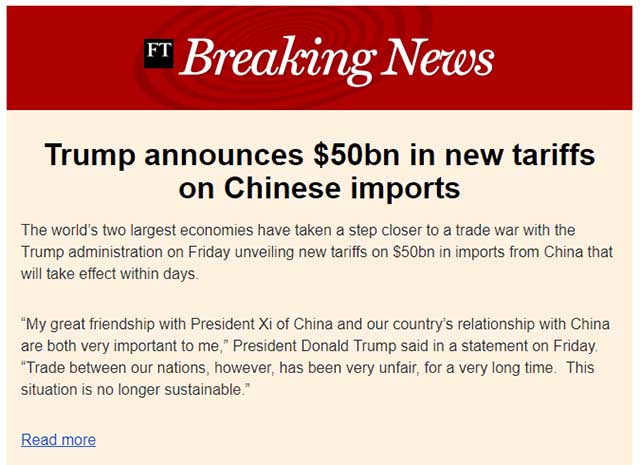2018-7-4 02:52 |
BM has described his ideas on many occasions, hoping to find a free market to protect life, freedom, and property by means of building a certain community governaning system, so as to achieve the objective that nobody is too strong, and that rules are stable and predictable.
BM also believes that Bitcoin, Ethereum, and EOS need to establish a system to be able to correct unauthorized transactions to prevent subjective or ambiguous situations.
However, he did not recognize the supervision led by “weak center of the chain,” like the project of Bitcoin, where the management team is made up of the people trusted by the community. He also did not agree with the “chain supervision,” where the users who hold virtual currencies can vote on business decisions, believing that “one coin, one ticket” would actually lead to a plutocracy.
He held that before the blockchain projects, neither POW nor POS could meet these performance requirements, and that the myth that “code as a law” might not exist, especially when considering the loopholes resulting from the defects in the consensus mechanism, such as: the rule of man, the shadow government and the centralization of mining pools.
Therefore, the solution of EOS we found was to ask community organizations to establish a set of principles, different from the existing centralized government of other blockchains, and apply blockchain technology to perform objective and confirmable contracts, and meanwhile to consider the arbitrator to be the sage for subjective assessment of non-confirmable contracts.
The examples for solving such an idea applied to the design of the consensus mechanism including supernodes and the graphene technology of EOS. We have to admit that such an innovative design has amplified the effects of attracting community resources.
EOS tried to solve people’s problems via a digital government that includes the departments of the Constitution (block.one), the Administration (supernode), and the Judiciary (the core arbitration forum), to find a balance point for decentralization by combining the supervisions on and off the chain.
However, EOS did not appear to be as “decentralized” in governance as BM had envisioned. Many challenges against such an idea happened in less than a month after the launch of the main-net, for example:
Recently, the Core Arbitration Forum issued an “emergency measure protection order,” requiring the supernodes to prohibit the processing of transactions with 27 different wallet addresses, without explaining the reasons why. Previously, the supernodes also agreed to lock out seven accounts suspected of theft. Such measures may be taken frequently without advance notice. In this regard, who will determine whether the result of such a trust ruling is absolutely correct? The supernodes, are a crucial part in the design of the entire mechanism, but it showed that there are obvious problems in its election process. For example, the exchange maneuvered a large number of ticket holders for their users to vote or send free tickets, However, after the election, they showed no interest in participating in the governance of EOS. The vote exhibited obvious centralization. More than 50% of the votes obtained from Bitfinex came from four voting parties, and that from EOS New York came from just 20 voters. It was also revealed that at least dozens of supernodes pretended to adopt their own servers to produce blocks, but actually used the cloud services of Google, Alibaba, Amazon and other companies, which goes against the decentralized design and brings risks for EOS to be blocked by counterparties.Opponents argue that these events mean that EOS is not a decentralized network at all. The power of the Arbitration Forum and supernodes is too great.
The design of the consensus mechanism is based on the “good of human nature,” which is difficult to establish in reality. The so-called competitor, V-God, commented that the 21 supernodes of EOS were not 21 different entities but were intrinsically linked together, creating to a plutocracy.
At least, up to now, EOS has not shown the support for stable computing capacity or made protective measures for fairness, the greatest advantage of blockchain.
However, if we think about it beyond these projects, is the blockchain really unable to balance performance and security? Does it necessarily need to be ruled by people that can reverse transactions after the fact? Is complete decentralization a pseudo-proposition?
According to the laws of technology development, the answers to these problems are obviously negative. We can be rest assured that with the development of blockchain technology, these problems will gradually be solved. But there is another question, can the problem solving process be accelerated?
We believe that a thing like the blockchain that stems from the internet, can greatly alleviate the struggles in the impossible triangles (trilemmas) of many existing projects, provided that the most advanced productivity endowments of the internet are applied, and are supplemented by the consensus mechanism design, to fully unleash its effectiveness.
MATRIX’s consensus mechanism design might provide an optimal solution, which is the deep integration of the advanced productivity represented by: AI, the advanced and productive relationships presented by blockchain, and the advantages of the previous blockchain consensus mechanism design.
The project includes: basic chain, artificial intelligence, security defense, system applications, and blockchain operating systems that are friendly to users as well as developers.
Different from AI blockchain projects catering to the AI industry, it actually incorporates the capacity of AI into all aspects of the blockchain itself. MATRIX’s powerful core team, provides strong endorsement to the implementation of their blockchain projects.
The team includes many scholars, such as: a nationally renowned AI professor who has won two international competitions and designed AI early-warning security solutions for high-speed rail; a top chip design expert, who made the dominant design for the first model of WiFi chip of China, and also designed the communication scheduling system for the Liaoning aircraft carrier; a top mining and chip scientist, who took charge of the digital acceleration coprocessors that had the highest performance in domestic DSP processors, they also acted as a key project leader for Samsung Semiconductor and AMD.
The consensus mechanism design of MATRIX is based on the team’s technology. In basic terms, it is the “supernode + POW” mechanism that is gradually generated, level by level, with the help of AI, taking care of decentralization, performance, and security.
In terms of decentralization, 32 supernodes are randomly created via AI clustering algorithms, of which 21 are randomly selected as mining nodes and the other 11 become supervisory nodes.The specific realization is that the hardware indicators that meet the requirements of the system can become the master node, meanwhile 10,000 MAN tokens can be used to participate in the election of supernodes; the one-hour election interval allows each underlying master node to have a chance to become a supernode and therefore take part in the tasks of mining and supervising.
The main node is divided into 32 groups by the AI clustering algorithm. In each group, one supernode will be randomly generated by the calculations of the master node.
It not only provides a certain degree of randomness to avoid the plutocracy and domination of EOS, as the groups will be redivided each election cycle; this also ensures that similar nodes will be grouped together, so that the lesser nodes can handle the task better and the supernodes cannot distribute all of the computing capacity, but have to carry out the distribution gradually.
The supernodes responsible for mining do not successively package transactions like EOS, but are computationally competitive with random and fair POW mechanisms. The votes of the supervising nodes can make the final block generation adjustments and supervision.
However, in normal circumstances, these supervisiory nodes will neither play any role nor set up the arbitration commission with standing members.
In terms of performance, 1000 to 2000 TPS can be achieved at present, and 50,000 TPS under laboratory conditions. The current VISA is around 25,000 TPS. Therefore, 50,000 TPS is enough for it to meet the needs of landing applications. In theory, a million TPS can be reached, however, this is impossible to realize as all projects are subject to available bandwidth, as such it is difficult to compare these results to other projects.MATRIX achieves the high concurrency effect via the AI-based Hyper Pow consensus mechanism; its overall framework is the router mode.
The required computing capacity can be distributed in stages, which not only ensures the stable output of computing power, but also avoids the problems of insufficient performance or corruption that supernodes might have, while a system like EOS requires powerful supernodes to ensure performance.
In terms of security, firstly, MATRIX has a dark guardian mechanism. Each node is able to supervise supernodes (including digging holes and monitoring nodes). It is similar to the design of “Chaoyang people” who are reportedly really competent in voluntary supervision against corruption. Once a supernode is found to do evil, the underlying nodes shall report this, and the whole network consensus mechanism shall judge the authenticity of the report. If the report is true, the reporting nodes can be rewarded accordingly.In addition, there is a form verification technology based on AI, which is referred to as the anti-virus software of the blockchain.
In the formation of intelligent contracts, such a technology will take the initiative to discover the loopholes in the codes and contracts, meanwhile generating a confrontation network that make continuous self-attacks to discover whether there are system loopholes.
As incentive, the tokens that the main node used as collateral for participation in elections shall enjoy a 3% annual yield. The supernodes for digging holes shall enjoy a large number of digging rewards and a small amount of participation rewards, while the supervising nodes shall receive equal amounts of rewards. When the computing capacity that that cannot be provided by the digging nodes is then supported by the lower nodes in the same group, the underlying nodes providing help will also share a corresponding reward.MATRIX itself has many other exquisite designs in terms of software and hardware integration, application and transmission of AI, and the development and support of blockchain applications.
Only from the consensus mechanism, it can be seen that it is effective integrating AI with the blockchain network system to make up for the problems of balance between decentralization and performance.
Although the whole project has not yet been optimized, it represents the correct orientation and momentum, and is deserving of our attentions to further its development.
The post EOS’s Decentralized Social Experiments and MATRIX’s Decentralized Practices appeared first on CoinSpeaker.
origin »Decentralized Machine Learning (DML) íà Currencies.ru
|
|











